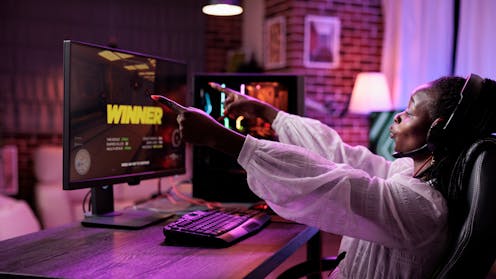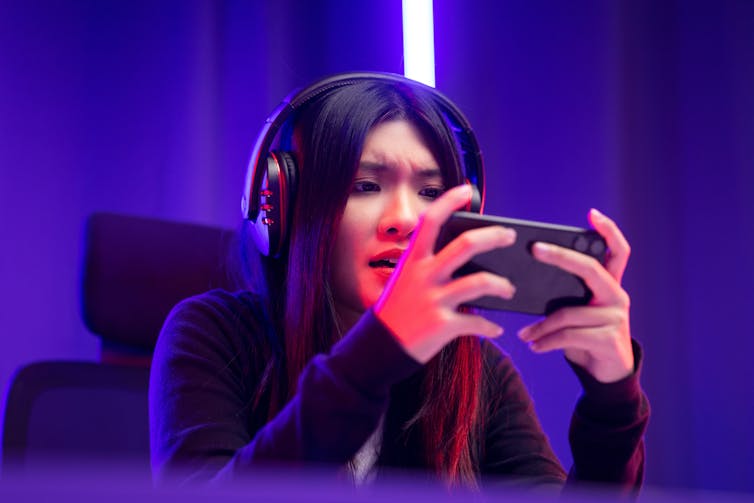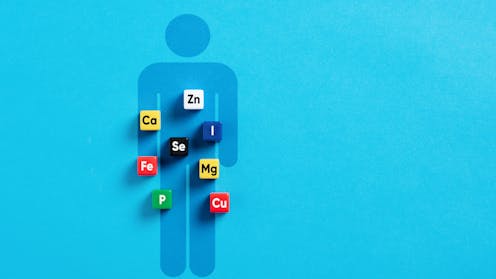Source: The Conversation – UK – By Emily-Rose Baker, Research Fellow, Department of English, University of Southampton
At this year’s Cannes Film Festival, the Auschwitz-Birkenau Memorial and Museum announced the launch of a new digital replica of the concentration camp for filmmakers. Titled Picture from Auschwitz, the virtual film location is designed to facilitate a range of productions set on the grounds, where preservation regulations currently restrict filming to documentaries.
Established in the town of Oświęcim in German-occupied Poland, Auschwitz consisted of three main camps where over 1.1 million European Jews were murdered: the Auschwitz I concentration camp, the Auschwitz II (Birkenau) killing centre and the Auschwitz III (Monowitz) labour camp.
With this new technology, the museum hopes to support the “true story” of the camp, “without compromising the memorial’s historical integrity”. It intends to do so not only by digitally preserving the Holocaust site, which receives over two million visitors annually, but by submitting the scripts for all new feature film projects involving the replica to a team of historians for review.
A glimpse of the digitised location shows a virtual model of Auschwitz I which, as its name suggests, provides a clear snapshot of the camp’s barracks, grounds and infamous wrought iron gates. The two-minute trailer claims that the certified 1:1 digital representation is the “biggest and most detailed documentation of the camp”. It will eventually include the interior as well as exterior environment of Auschwitz I and II.
The project’s use of digital technology to safeguard Holocaust memories for future generations is symptomatic of a global shift towards digitising the Holocaust as the survivor generation passes on and heritage sites decay over time – a process accelerated by extreme weathering associated with the climate crisis.
As the Holocaust recedes from living memory, cultural institutions are increasingly reliant on digital tools to remember the past. While some have used virtual reality to digitally reconstruct and maintain key Holocaust sites, others have turned to AI to generate interactive survivor holograms.
These technologies are becoming popular educational tools designed for use in classrooms as well as museums and memorial sites.
Ethical implications
Digital memory projects protect and make Holocaust sites globally accessible. Yet these same technologies risk distorting the historical record.
In the UK, public debates concerning the ethics of digital Holocaust technologies including AI and VR have involved high profile politicians as well as scholars. Meanwhile, international bodies including Unesco and the World Jewish Congress have reported that generative AI in particular may fuel Holocaust distortion.
Picture from Auschwitz aims to address these issues and its creators purport to enable “ethical storytelling”. The director of the Auschwitz-Birkenau Foundation, Wojciech Soczewica, referred to the project on the Memorial’s website as a “powerful example of how culture and technology can unite to protect our shared human history from distortion and denial”. The replica will “preserve the relevance of the history of Auschwitz”, he added, ensuring it won’t “fade with time”.
While the virtual site digitally preserves and encourages historically rooted depictions of the camp, it cannot ensure ethical engagement with the Holocaust. In fact, its creation only raises further issues about the extent to which the Holocaust’s digitisation goes hand-in-hand with ethical modes of remembrance and representation.
A glimpse of the Picture from Auschwitz project
A wholly “authentic” depiction of any Holocaust site or experience is something that digital and filmic interventions can only gesture towards.
Even if such a depiction were possible, ethical portrayals of the Holocaust are not contingent on the accurate representation of sites themselves. They are equally concerned with the kinds of stories being told as well as formal and stylistic factors. As film researcher Archie Wolfman argues, filmmakers’ choices “about camera movements, angles, lighting and editing have as much ethical significance as what is in front of the camera”.
The implication that Auschwitz must be digitised for its legacy to be protected suggests that the wealth of material that already exists on the camp – including its extant remains, the personal belongings of victims and survivor testimonies – are no longer sufficient memorial tools. It also problematically suggests that Holocaust history must somehow keep up with digital culture to remain relevant.
The digitisation of Auschwitz perpetuates the privileging of some Holocaust sites and stories above others, such as the rural landscapes across central and eastern Europe where no human structures or visible traces of the past remain. Even within this, Picture from Auschwitz plans to offer only a selective representation of the camp complex. It excludes Auschwitz III, its network of sub-camps and the surrounding environment.
At the same time, the proposed script review process demonstrates the memorial’s involvement in presiding over cultural narratives of the event. The only artistic representations that are of value, the project implies, are those favouring realism, disregarding Holocaust films that diverge from this aesthetic. This includes stylised films like Jojo Rabbit (2019), The Cremator (1969) and Distant Journey (1949), the latter of which was shot on location in Terezín in the Czech Republic. It showed that films using Holocaust sites need not possess an indexical link to reality to meaningfully represent the event.
The replica ultimately reveals a tension between growing public demand for cultural Holocaust production and the difficulty in cultivating ethical representations of the event. Navigating the ethical dimensions of Holocaust narratives has always been a challenge. But this challenge is rendered ever more complex by digital innovations, which are evolving and difficult to police.
Picture from Auschwitz shows the extent to which the digital is changing how knowledge of the event is understood and disseminated – not always for the better.
Looking for something good? Cut through the noise with a carefully curated selection of the latest releases, live events and exhibitions, straight to your inbox every fortnight, on Fridays. Sign up here.
![]()
Emily-Rose Baker does not work for, consult, own shares in or receive funding from any company or organisation that would benefit from this article, and has disclosed no relevant affiliations beyond their academic appointment.
– ref. The problem with Auschwitz-Birkenau’s new digital camp replica – https://theconversation.com/the-problem-with-auschwitz-birkenaus-new-digital-camp-replica-263469







